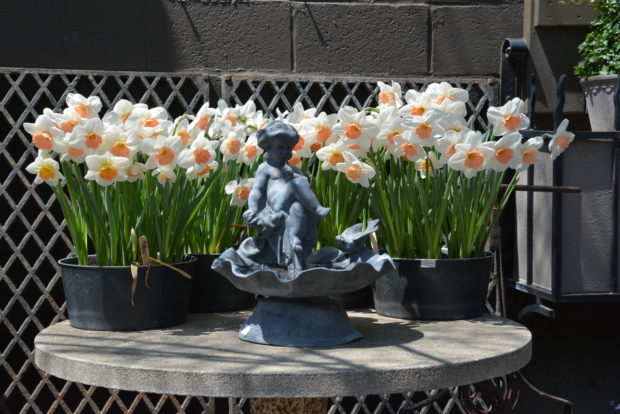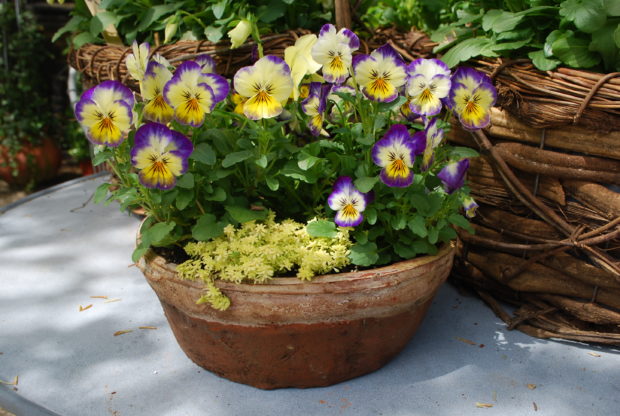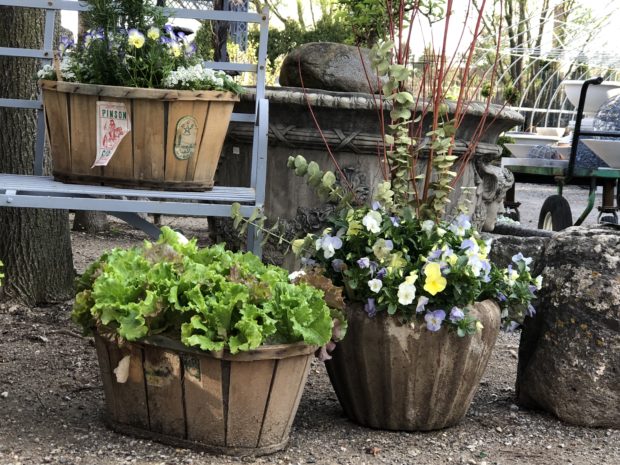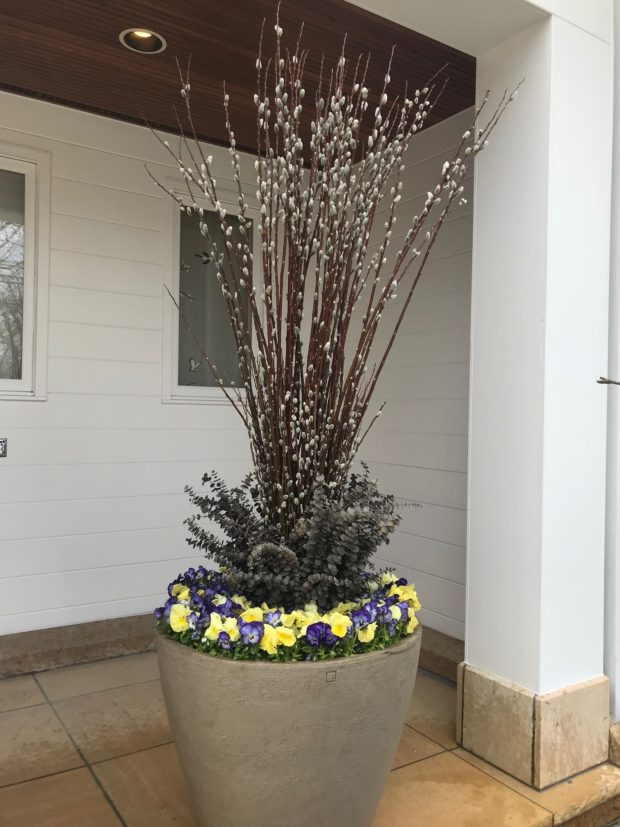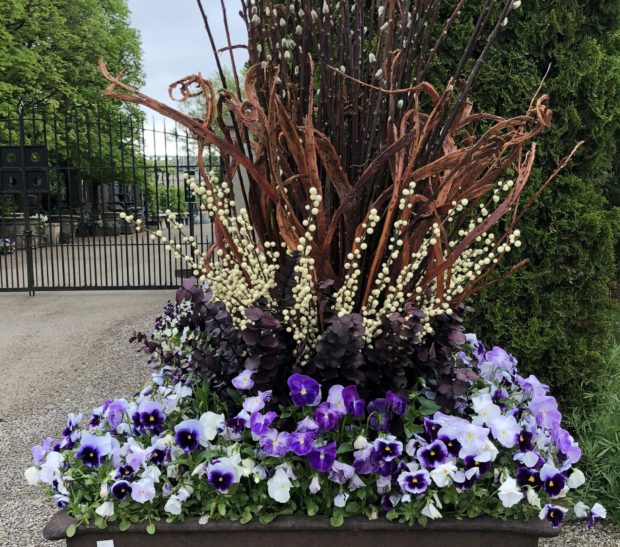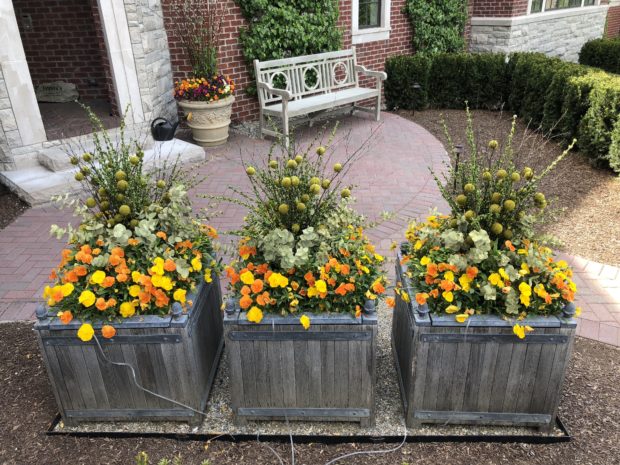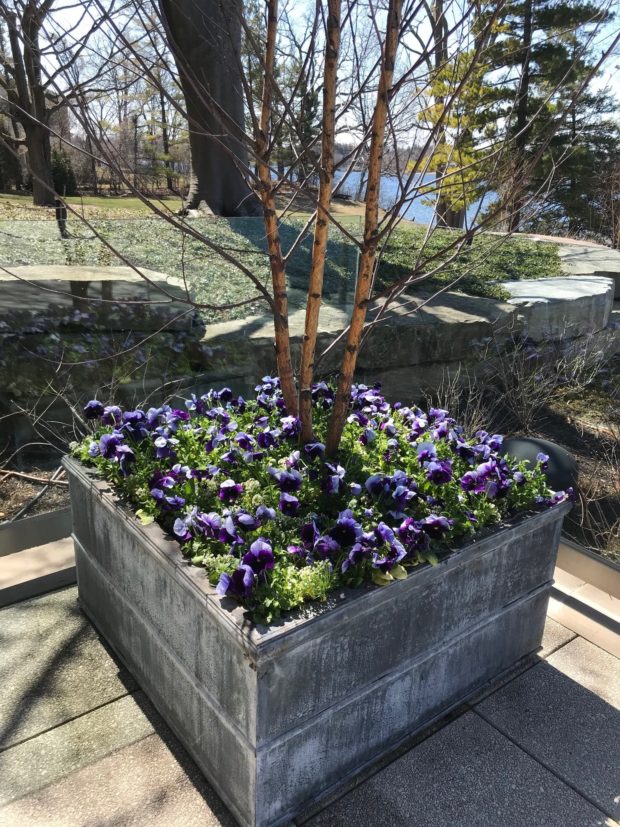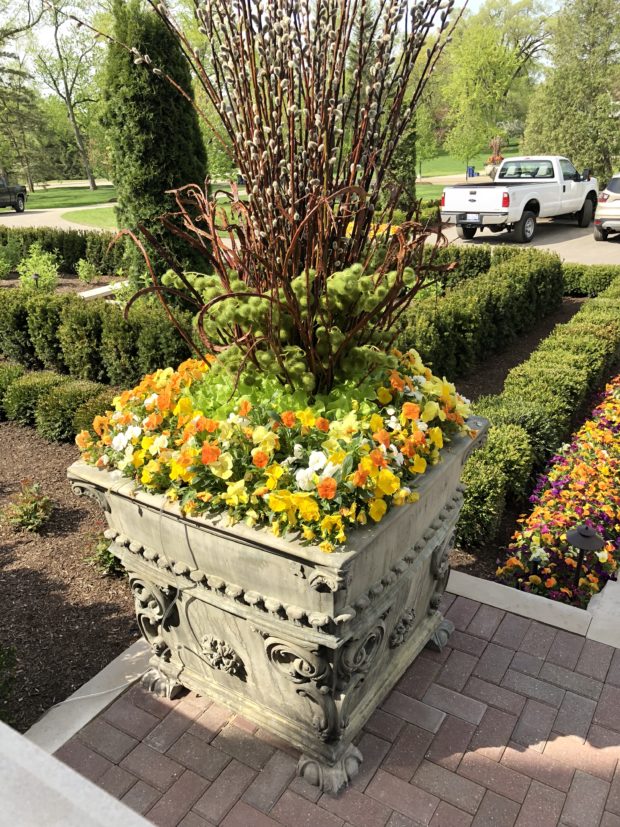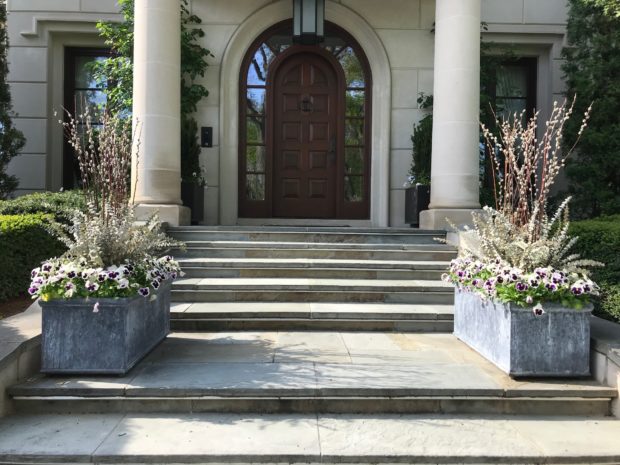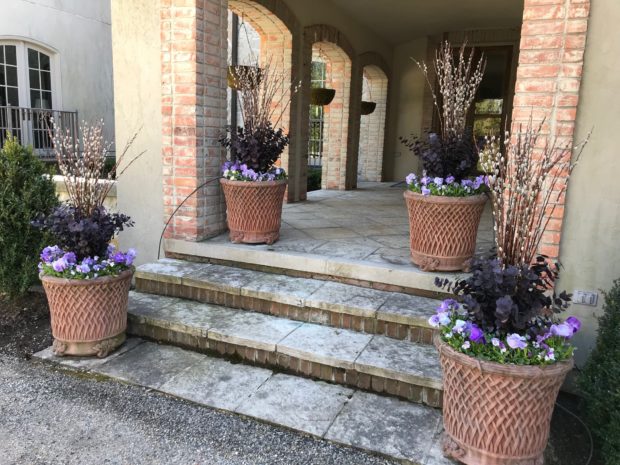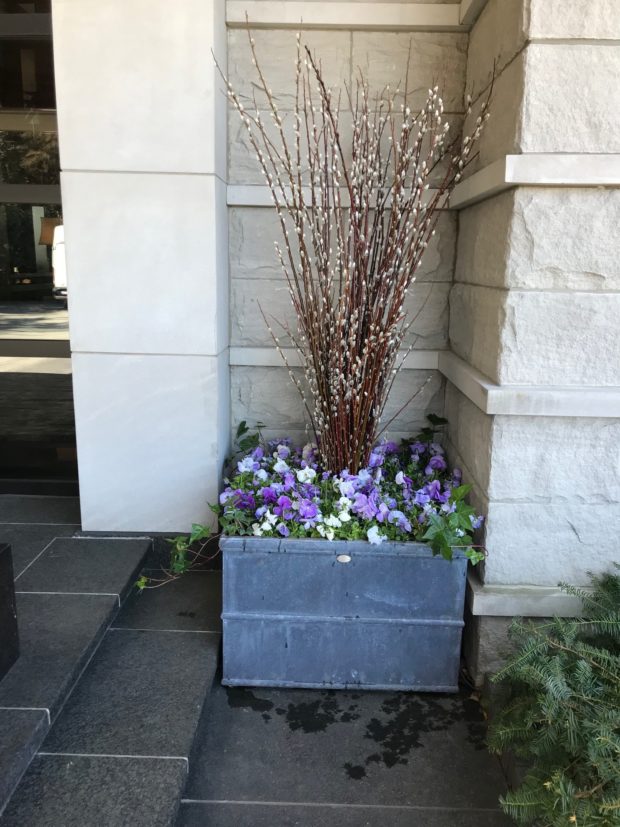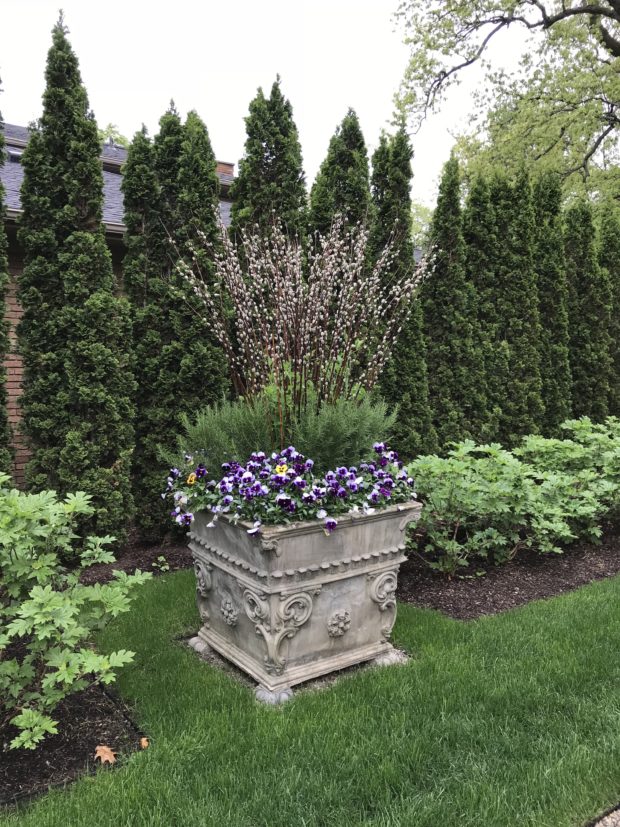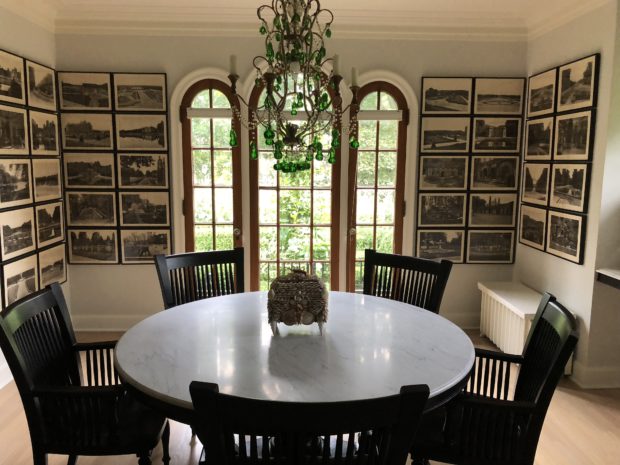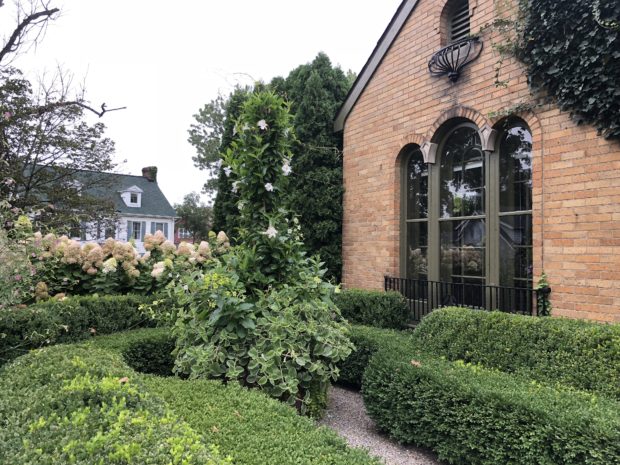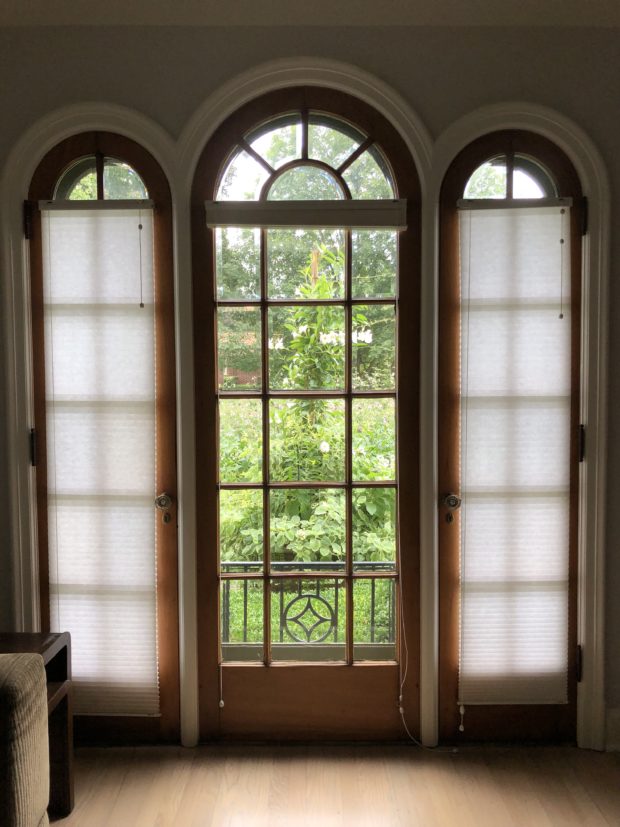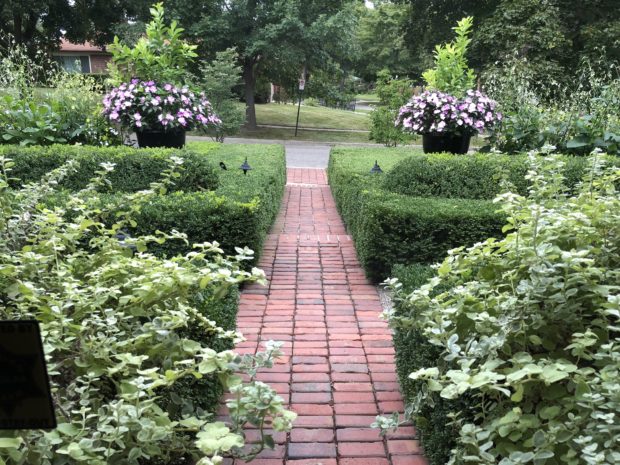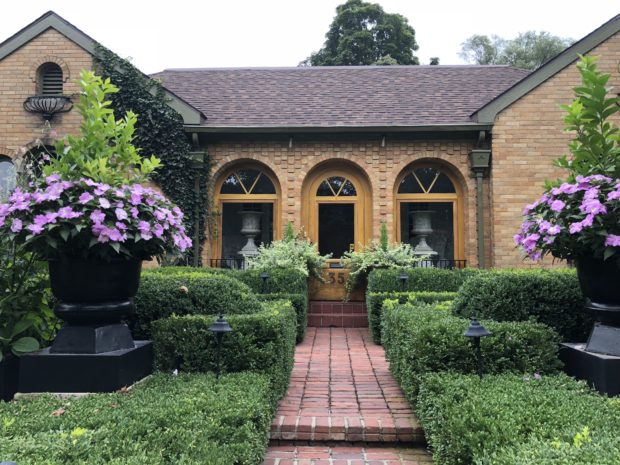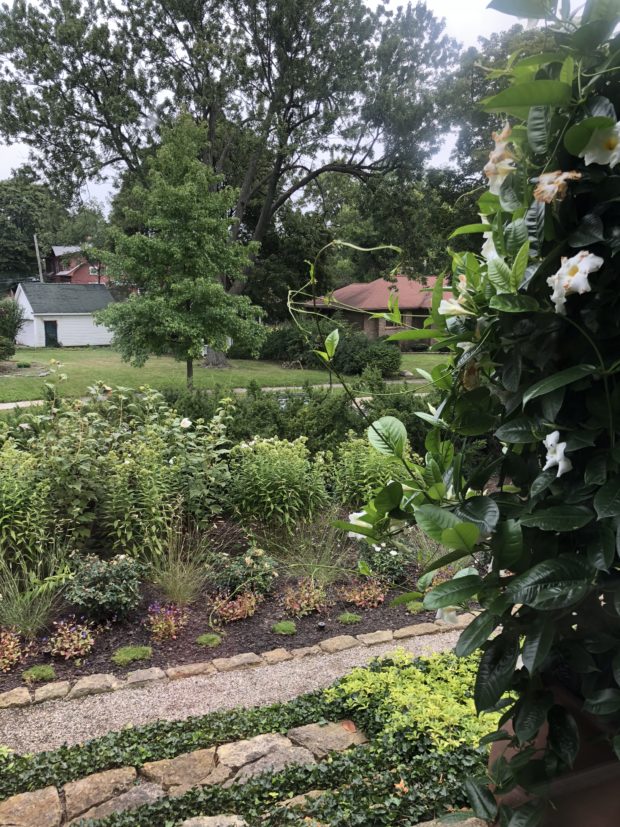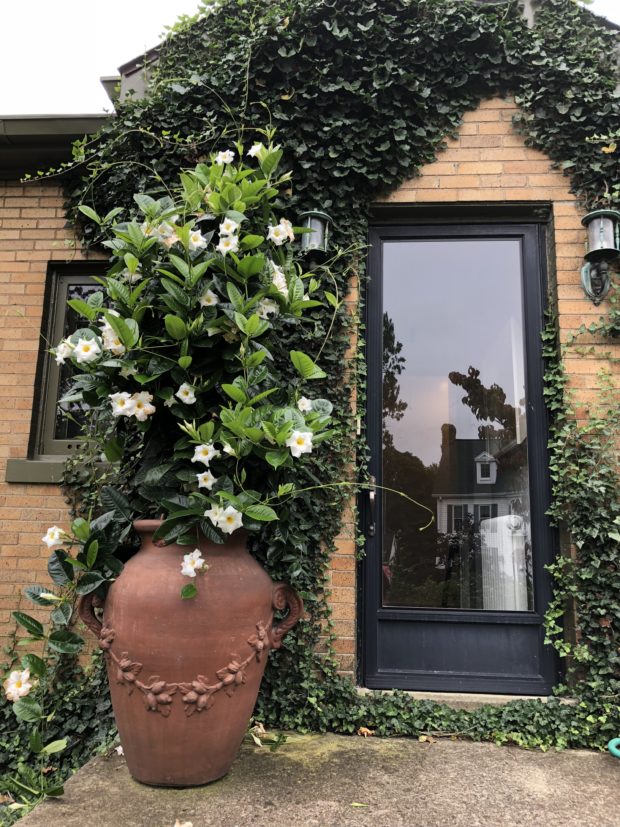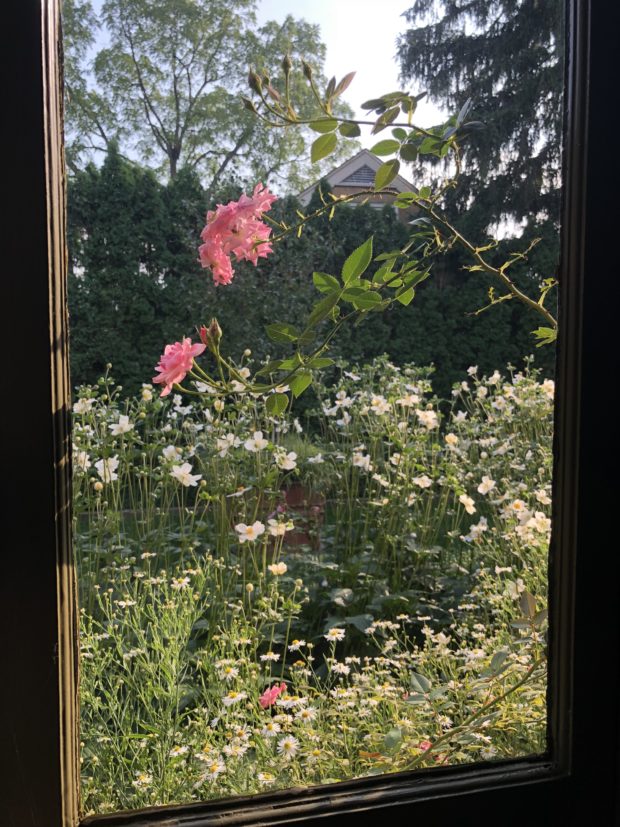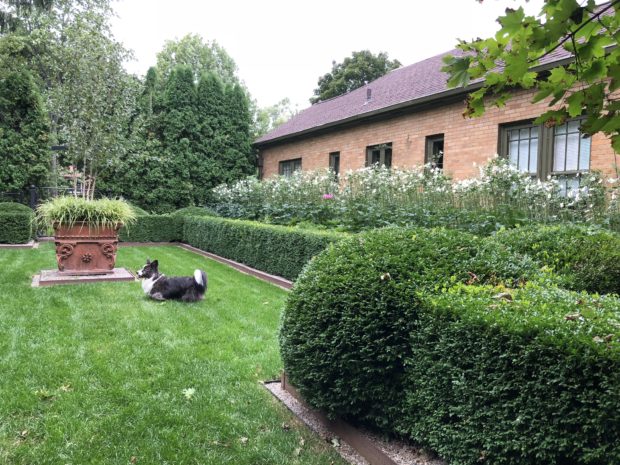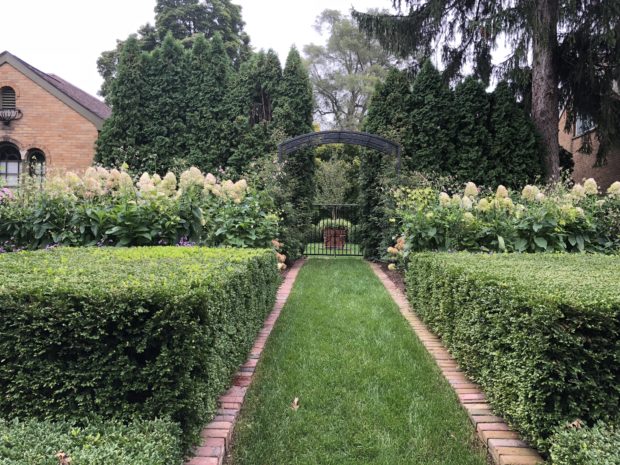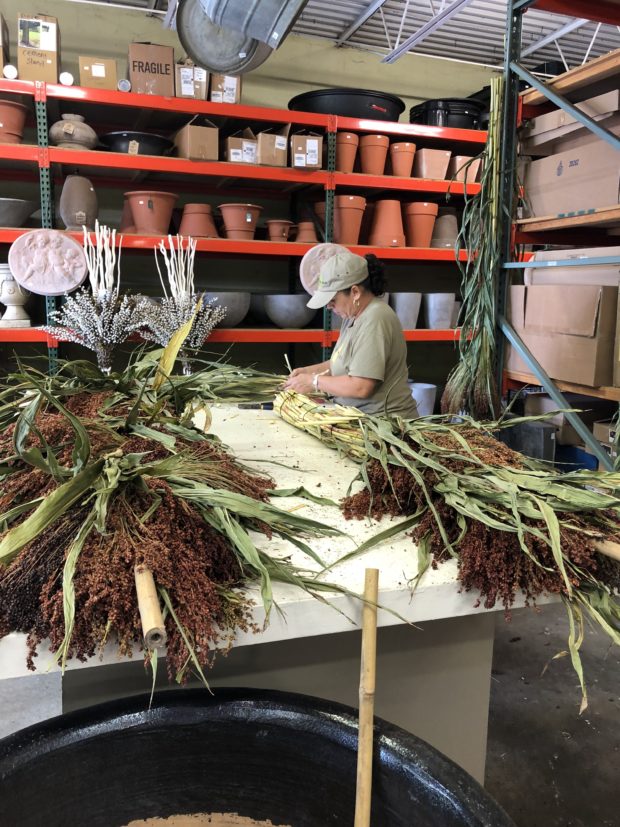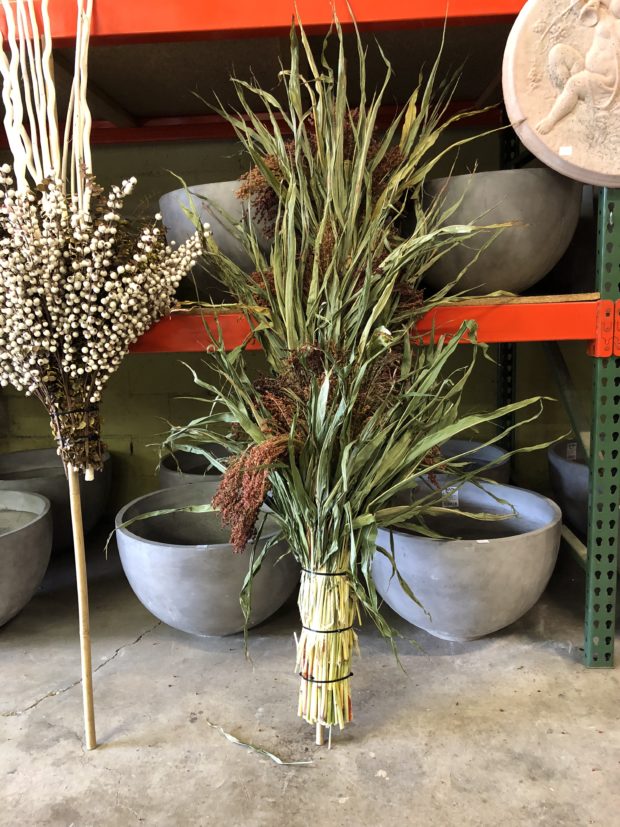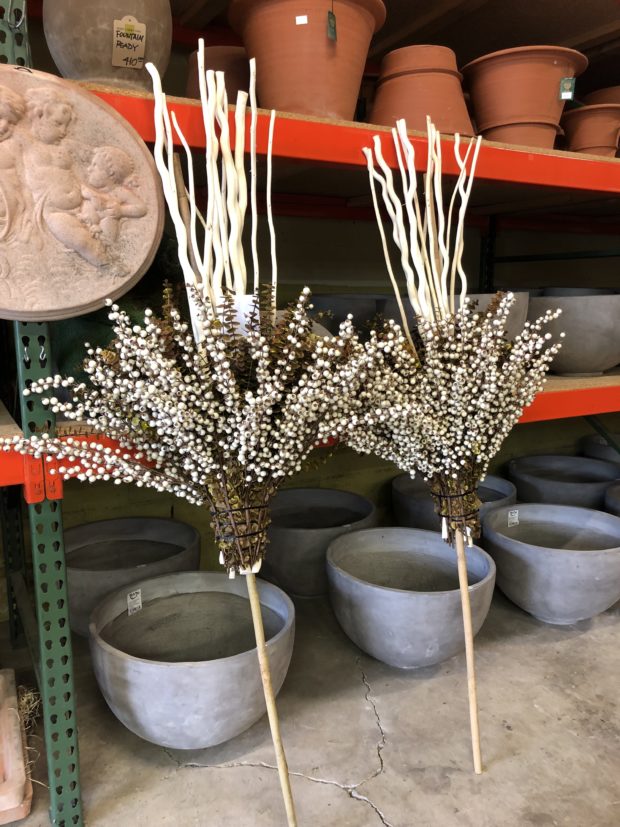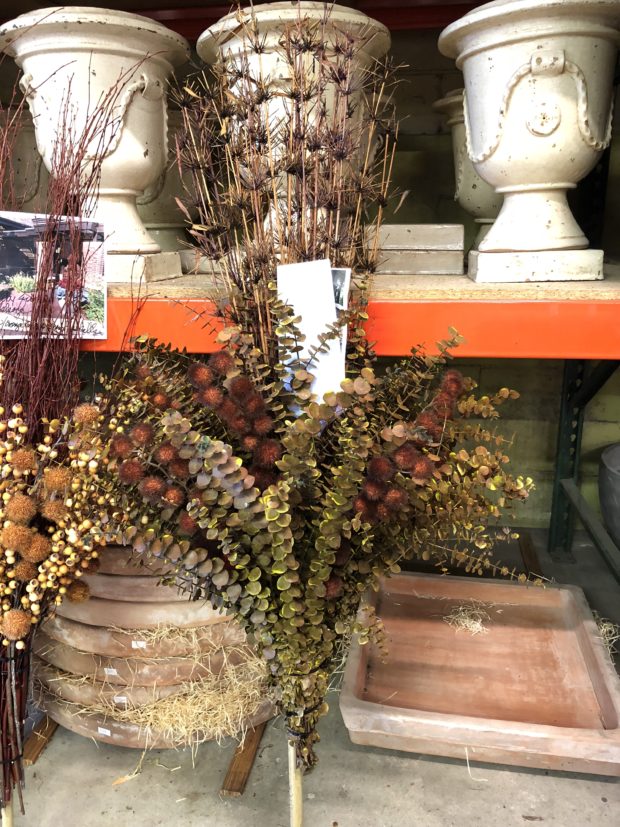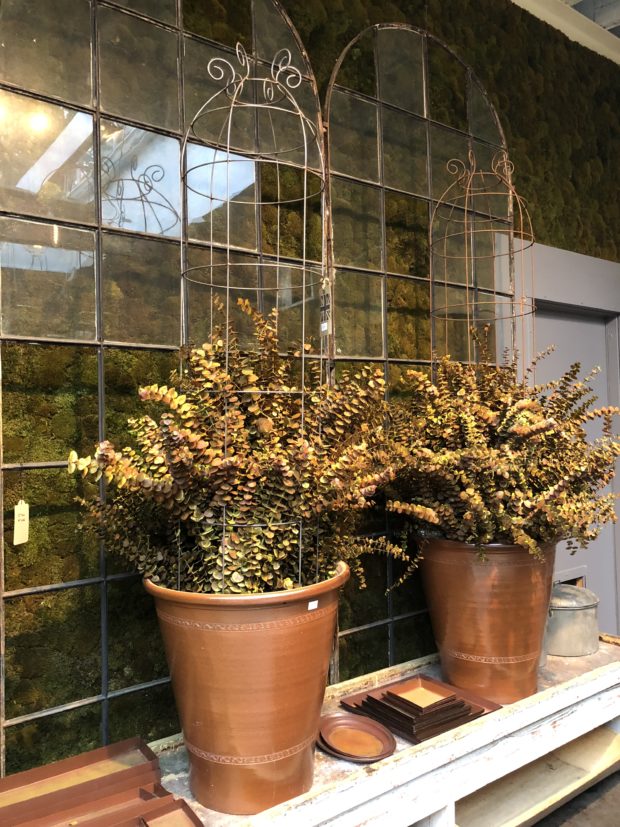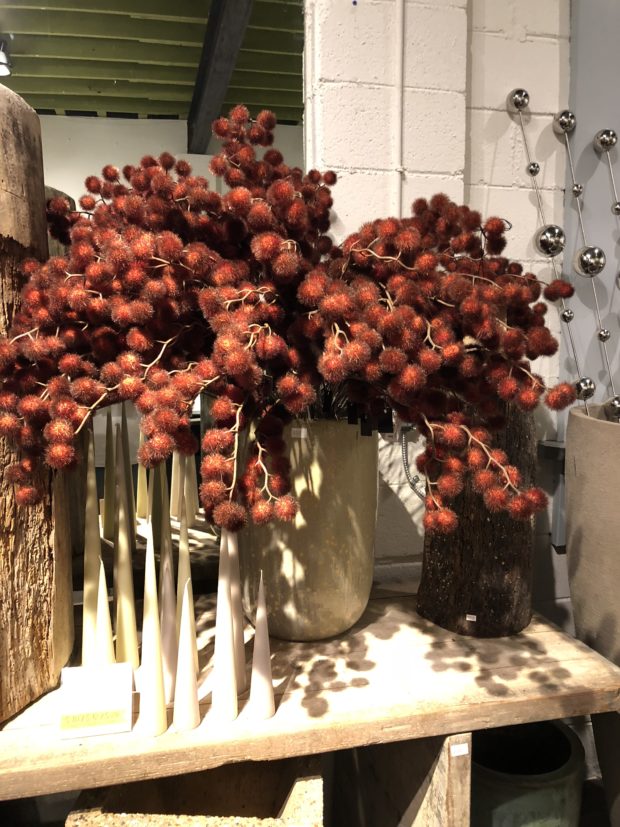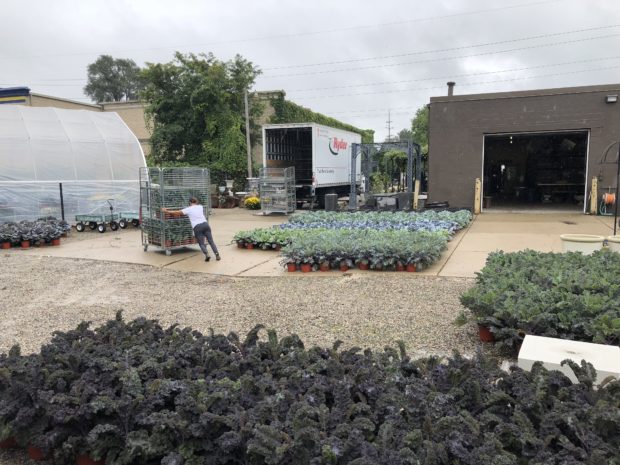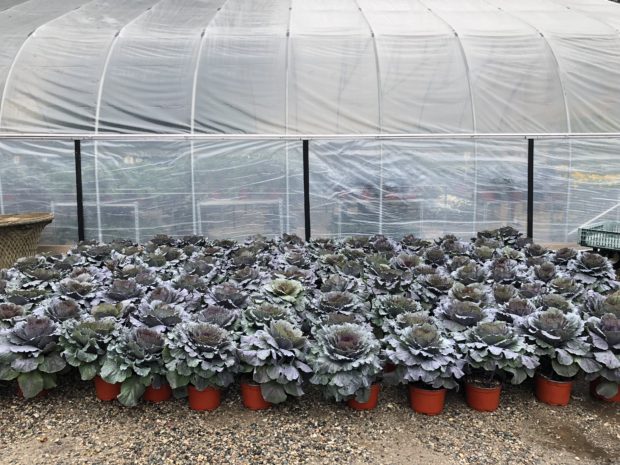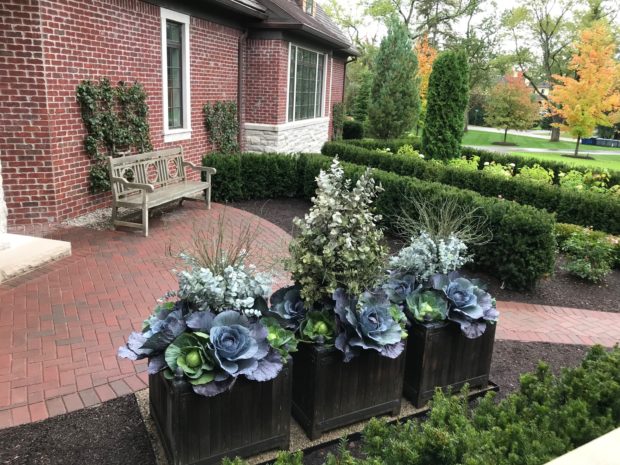 Our spring has been an exasperatingly wintry sort of gray and cold. April has been a last of the winter month. But today April 30th, we have blue skies. That blue is a giant step towards spring. Every gardener in my zone is on that plane that promises to leave our wretched April weather behind. The sun drenching my landscape with warmth and promise-that promise could not be more welcome. Was this worst April of my gardening lifetime? Yes.
Our spring has been an exasperatingly wintry sort of gray and cold. April has been a last of the winter month. But today April 30th, we have blue skies. That blue is a giant step towards spring. Every gardener in my zone is on that plane that promises to leave our wretched April weather behind. The sun drenching my landscape with warmth and promise-that promise could not be more welcome. Was this worst April of my gardening lifetime? Yes.
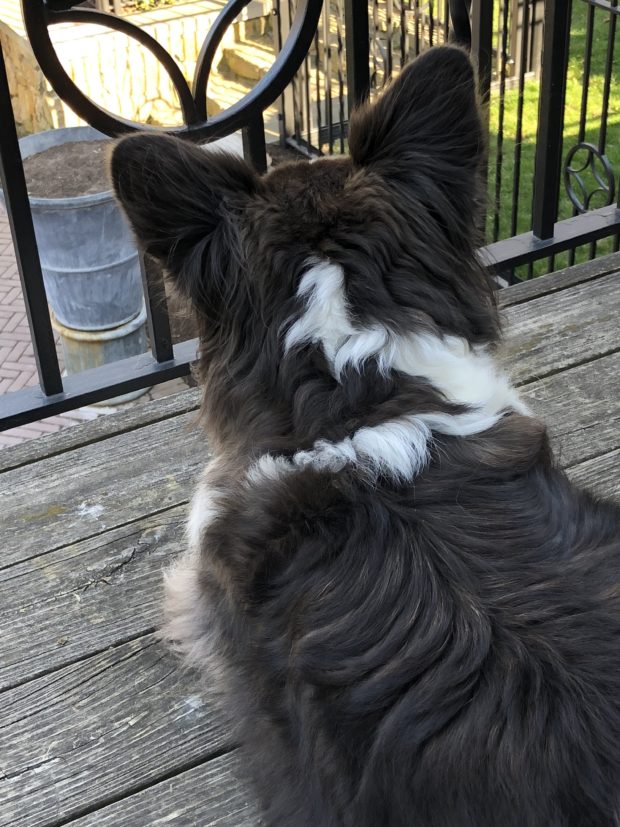 No one is happy looking at empty pots. It has been too cold to plant anything except the most cold tolerant plants. Can you hear me sighing? Not that my memory of past Aprils mean much. I know that the weather cycles in years vastly bigger than my time on this earth. The theys who keep records say this is the coldest April we have had for 134 years. We’ve all been living that scene. Sitting out a few nights ago after work made me wish I had a coat like Milo’s. Today we are slated to hit 80 degrees.
No one is happy looking at empty pots. It has been too cold to plant anything except the most cold tolerant plants. Can you hear me sighing? Not that my memory of past Aprils mean much. I know that the weather cycles in years vastly bigger than my time on this earth. The theys who keep records say this is the coldest April we have had for 134 years. We’ve all been living that scene. Sitting out a few nights ago after work made me wish I had a coat like Milo’s. Today we are slated to hit 80 degrees.
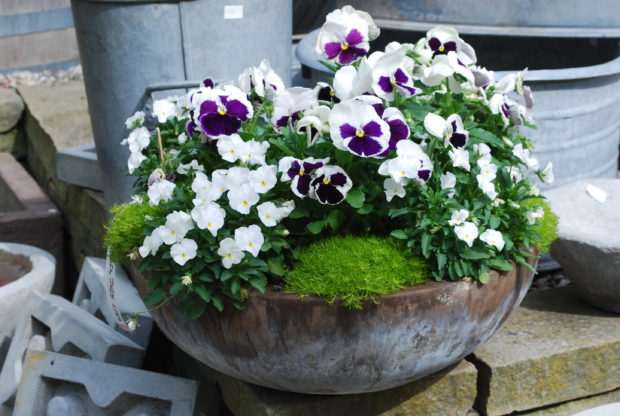 Today we will plant the last of our spring container plantings. Do I plan to post pictures of what we have planted this spring? No. It will take weeks for what we have planted to grow on and look like something. Spring container plantings are at their most beautiful the first of June. Perfect timing, in my estimation. My spring pots coming in to their own later in May prevents me from rushing to plant too early for summer. Nature, and gardeners, abhor a vacuum. The sight of bare dirt is instantly followed by the urge to plant. The urge to plant this year is especially strong. To follow are pictures of some of my favorite spring container plantings. Most of them were taken in late May.
Today we will plant the last of our spring container plantings. Do I plan to post pictures of what we have planted this spring? No. It will take weeks for what we have planted to grow on and look like something. Spring container plantings are at their most beautiful the first of June. Perfect timing, in my estimation. My spring pots coming in to their own later in May prevents me from rushing to plant too early for summer. Nature, and gardeners, abhor a vacuum. The sight of bare dirt is instantly followed by the urge to plant. The urge to plant this year is especially strong. To follow are pictures of some of my favorite spring container plantings. Most of them were taken in late May.
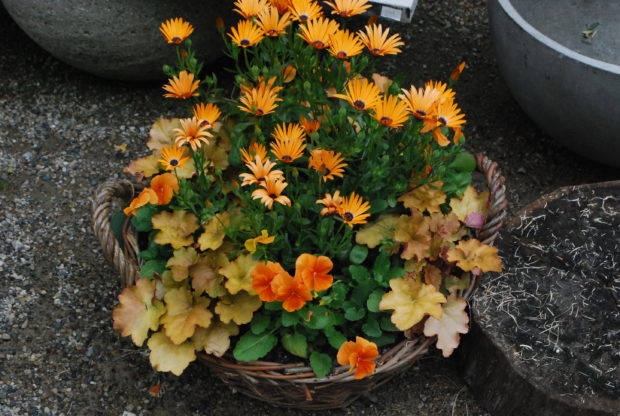 orange osteos, heuchera, and orange pansies
orange osteos, heuchera, and orange pansies
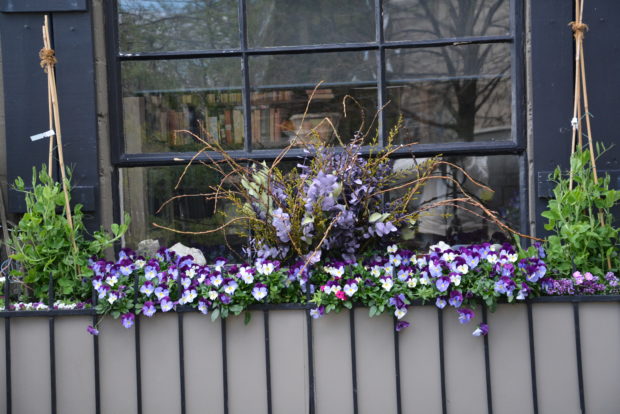 curly pussy willow and sweet peas
curly pussy willow and sweet peas
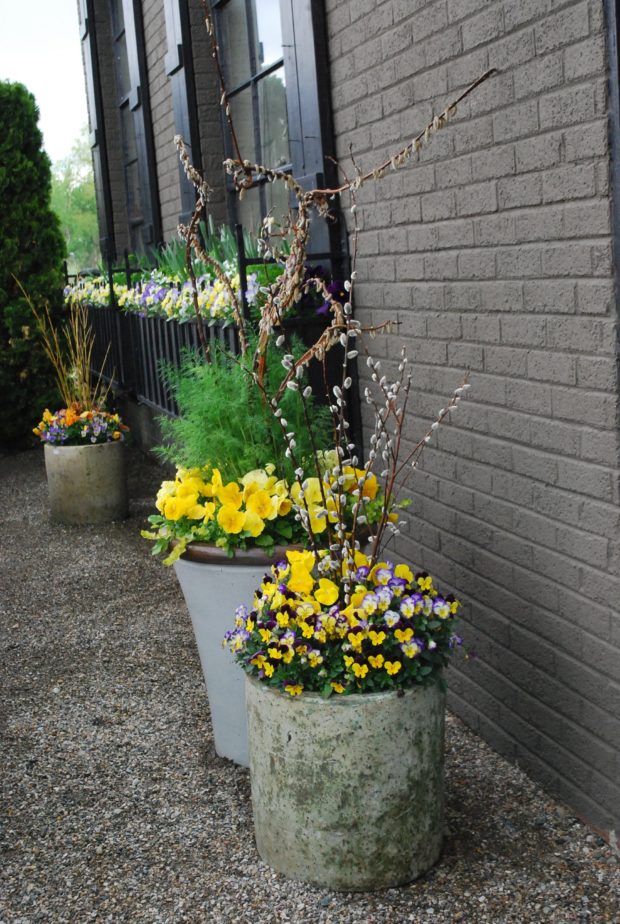 spring pots featuring pansies, violas, dill, and fan willow
spring pots featuring pansies, violas, dill, and fan willow
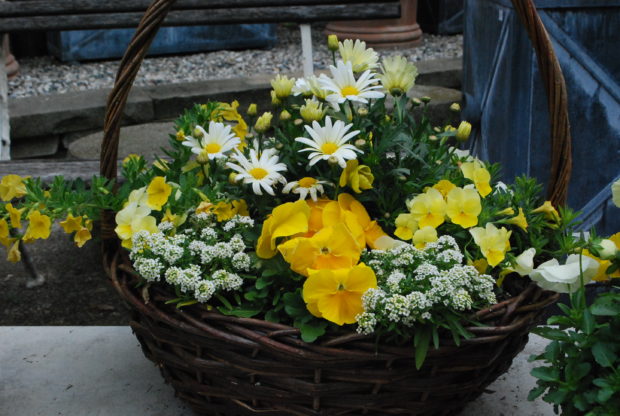 Marguerites, pansies, violas and cream alyssum in a basket
Marguerites, pansies, violas and cream alyssum in a basket
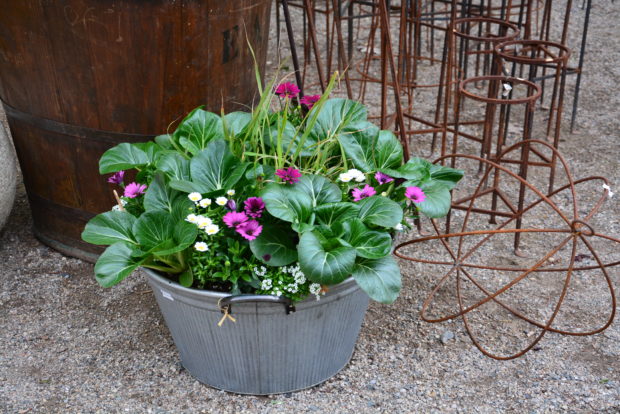 Bok Choy, osteospermum, mini marguerites and alyssum
Bok Choy, osteospermum, mini marguerites and alyssum
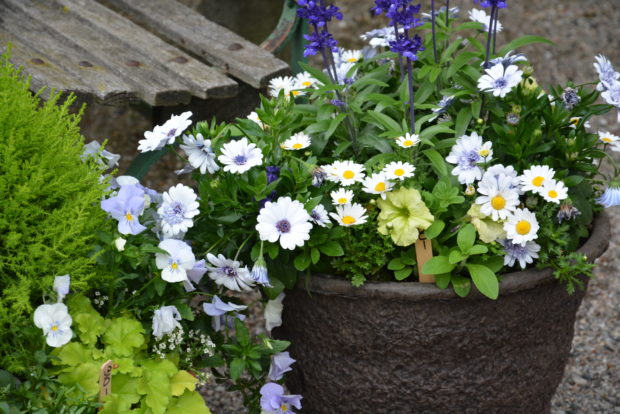 White osteospermum, chrysanthemum paludosum “Snowland”, yellow petunias and blue salvia
White osteospermum, chrysanthemum paludosum “Snowland”, yellow petunias and blue salvia
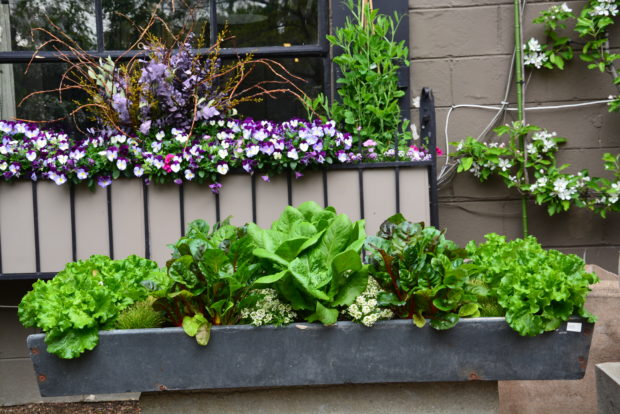 lettuce and alyssum in a basalt pan
lettuce and alyssum in a basalt pan
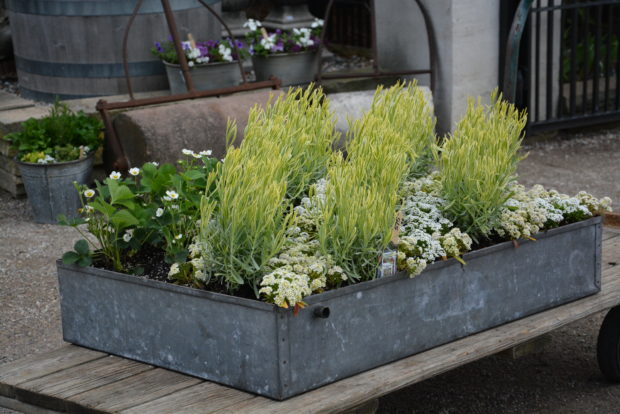 Variegated lavender, cream alyssum and strawberries in mid April
Variegated lavender, cream alyssum and strawberries in mid April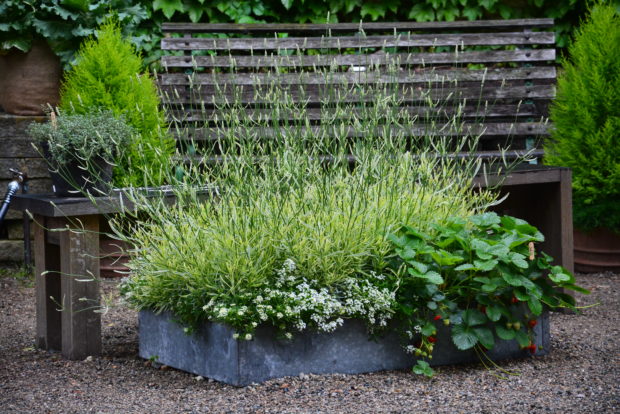 That mid April at the end of May-striking.
That mid April at the end of May-striking.


